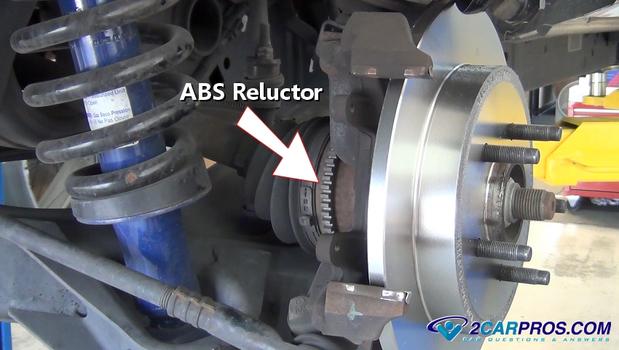How ABS Anti-lock Brakes Work?
Anti-Lock Brakes ABS
Working Of Car Automatic Brake System (ABS).
Helpful Information
Research has shown that an anti-lock brake system can decrease the chance of a vehicle accident by 18% and was introduced in the late seventies. By using gyroscopic and steering wheel angle sensors, not only does ABS provide non-skid functionality but it also supports electronic stability control, brake assist and traction control.
There are several types of ABS systems; some of the more popular systems are based on the Bosch ABS Actuator (BAA), Nippon-Denso ABS Actuator (NAA) systems. The basic idea is the same, Nippon-Denso systems has a separate solenoid pack and ABS computer, where as the Bosch systems both the components are combined.
High quality brake fluid must be used in ABS brake systems due to harsh usage. When the ABS system detects a problem a fault code is stored in the ABS system control unit and the warning light illuminated. Most ABS brake systems are "real time", when a code has triggered, and the repair made, the code should clear itself within a few yards of driving.
Easy to follow guide on how an automotive anti-lock brake system works, this information pertains to most vehicles.
The anti-lock brake system (ABS) helps to maintain control and directional stability of an automobile in case of extreme braking circumstances, this is achieved by controlling the rotational speed of each wheel by metering the brake line pressure to each individual wheel.
(Note: if the ABS light is "ON" while driving the anti-lock portion of the system is in bypass mode and will not operate.)

ABS Warning Light
The ABS assembly is made up partially of a central electronic unit, control solenoids and an electrical connector, during an ABS operation event, one or more of the solenoids help dump brake line pressure to a particular wheel allowing rotation.

ABS Controller
The motor and valve is designed to control fluid to each wheel which can either add or drop pressure.

ABS Motor and Valve
The system uses a reluctor-wheel to track rotation which is picked up by a sensor.

ABS Wheel Reluctor
A wheel speed sensor is used to pick up a magnetic pulse wave pattern generated by the reluctor ring and is feedback to the ABS computer. The location of wheel speed sensor may vary, on some vehicles the front sensor is made into the steering knuckle or spindle, near the front wheel hub or outer CV joint.

ABS Wheel Speed Sensor

ABS Warning Light

ABS Controller
The motor and valve is designed to control fluid to each wheel which can either add or drop pressure.

ABS Motor and Valve

ABS Wheel Reluctor

ABS Wheel Speed Sensor
Comments
Post a Comment